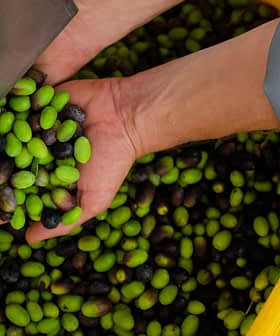Producers and bottlers in Andalusia exported more than €1.3 billion of olive oil in the first five months of 2022, an increase of 22.7 percent compared with the same period in 2021, according to data from Extenda.
The public export and foreign investment company found that Andalusian exports account for about 74 percent of all Spanish olive oil exports by value in the first half of 2022. Extenda added that 61 percent of those exports comprised extra virgin olive oil.
I believe that, probably, the price at origin could increase, and it would be necessary to see if the consumer is willing to pay it. At the moment, they are.
Rising olive oil export values have been part of a trend in Andalusia’s wider agricultural sector. The significant increase has helped fuel the autonomous community’s positive trade balance, which has seen exports outpace imports by more than €1 billion so far this year.
Overall, Andalusia has exported more than €18 billion worth of goods and products, representing 31 percent year-on-year growth and reaching the highest level since standardized data began to be collected in 1995.
See Also:Olive Oil Trade NewsThe positive trade figures from the first half of 2022 follow the southern autonomous community’s strong performance in the previous year.
Local media hailed 2021 as a record year, with Analdusia exporting more than €21 billion in the first nine months of the year. Once again, olive oil exports led the way but were closely followed by exports of other fruit, vegetables, legumes and animal and vegetable oils.
Rafael Pico Lapuente, the executive director of the Spanish Association of Olive Oil Exporting, Industry and Commerce (Asoliva), said a similar uptick in olive oil exports by value had also been recorded in the rest of Spain.
He told Olive Oil Times that the increases in exports by value were mostly the result of rising prices at origin. Lapuente added that national olive oil exports by volume fell by 16 percent in the first quarter of 2022 and were down by 6 percent in the first half of the year.
Another factor contributing to rising prices may be the Russian invasion of Ukraine, which has led to a spike in the prices of sunflower oil, providing olive oil producers a better chance to compete at favorable prices.
“The price of sunflower oil has increased notably, and the difference between the two is smaller,” Lapuente said. “The consumer, aware of the benefits of consuming olive oil, has decided to buy olive oil instead of sunflower oil.”
Data from Extenda indicated that seven of the top 10 export destinations for Andalusian olive oil experienced “significant growth,” defined as an increase of more than 19 percent.
Italy remained the leading market for Andalusian olive oil, importing €359 million in the first five months of the year, a 28.5‑percent increase compared to the same period in 2021.
The United States remained the second-largest market for Andalusian olive oil, importing €261 million from January to May, a 38-percent increase.
Lapuente attributed Andalusia’s strengthening position in the U.S. market to the five-year suspension of tariffs imposed by the U.S. on some Spanish olive oil exports as a result of the trade dispute about subsidies to U.S. and European Union aircraft manufacturers.
| Country | Value | % Increase |
| Italy | €359 million | 28.5 |
| United States | €261 million | 38 |
| Portugal | €130 million | - |
| France | €93 million | 40 |
| United Kingdom | €42 million | 72 |
| China | €39 million | 19.7 |
| Japan | €38 million | 0.7 |
| Germany | €35 million | 94 |
| Australia | €31 million | 4.1 |
| Mexico | €29.3 million | 46 |
Extenda data indicated that Germany is the fastest growing market for Andalusian olive oils, with a 94 percent increase in the first five months of 2022, importing €35 million.
The United Kingdom was the second fastest growing market, experiencing a 72 percent increase after importing €42 million.
Lapuente attributed this increase to a post-Brexit recovery of trading relations between Spain and the U.K. since the latter formally left the E.U. in January 2020. However, he added that olive oil exports to the U.K. remained well below pre-Brexit levels.
Outside of the traditional European and North American markets, Andalusian olive oil exports by value also grew significantly in China, Japan, South Korea, Australia, Mexico and the United Arab Emirates.
While some experts and officials have warned that olive oil production is likely to drop significantly in Spain as a result of the country’s ongoing drought, La Puente believes that there is potential for exports to continue increasing in value.
“We will have to wait to know how the harvest goes,” he said. “In principle, the estimated production of 1,350,000 tons plus the stock of 450,000 tons will provide sufficient availability of olive oil for national consumption and export.”
“I believe that, probably, the price at origin could increase, and it would be necessary to see if the consumer is willing to pay it,” he concluded. “At the moment, they are.”








